If you are willing to invest the time, effort, and money needed for raising strawberries in a greenhouse, it’s always strawberry season!
And even if you prefer to grow your strawberries outdoors as a summer crop, there are ways to extend the season for growing this luscious fruit for months beyond the usual late spring.
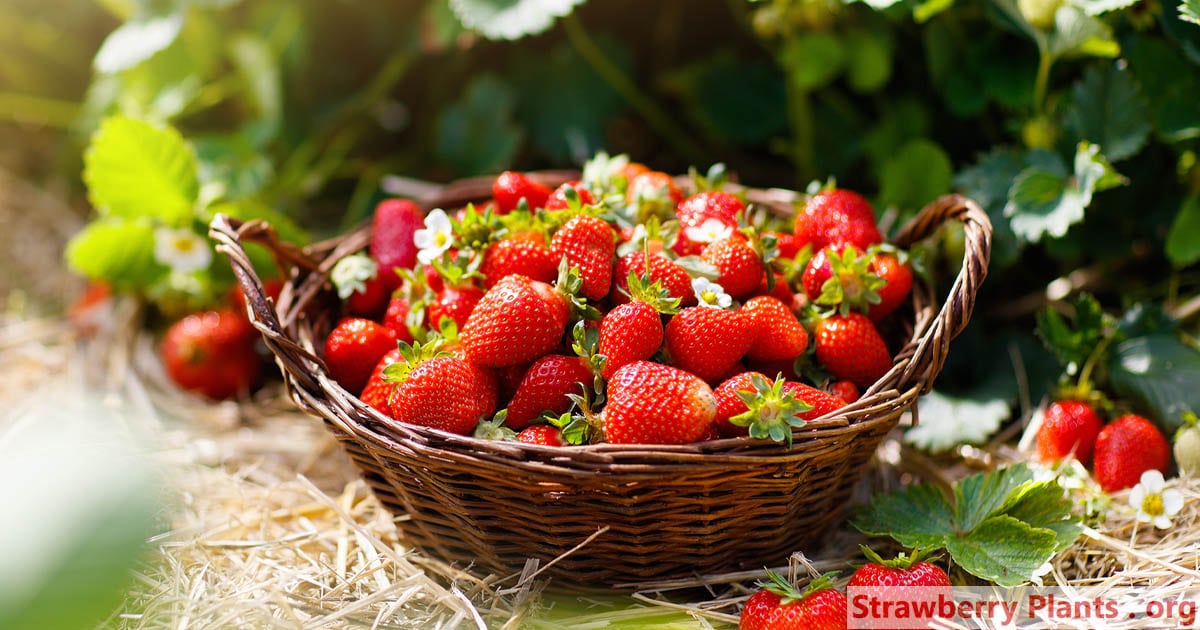
In this article, we’ll tell you what you need to know about choosing the right kinds of strawberries for a long summer growing season in your garden. We’ll also touch on the best ways to grow strawberry plants indoors for year-round enjoyment. But first, let’s take a closer look at how strawberries can differ by planting season.
Jump to:
Types of Strawberry Plants
It used to be that there were just two possible harvest seasons for strawberry plants. There were June strawberries that produced a single large crop of strawberries as soon after the first day of spring as the plants could grow large and strong enough to reproduce. This big, main crop was ready for harvest in June in cold-winter climates but might come in as early as April in locations that don’t get winter frosts.
There were also everbearing strawberries. Everbearing strawberry plants don’t really yield strawberries all the time. These plants put on two smaller crops every year, one in early summer and one a couple of months later. There would be six to eight weeks in between.
In 1983 the US Department of Agriculture Research Center in Beltsville, Maryland released two kinds of “day-neutral” strawberries, Tribute and Tristar. These cultivars and later varieties of day-neutral strawberries put on early summer and late summer crops like the everbearing strawberries, but they also produced small crops of berries during the six to eight weeks when they weren’t in peak production.
June-bearing strawberries are the most popular kinds of strawberries today, even 40 years after day-neutral strawberries became available. But there are advantages and disadvantages to all three kinds of strawberries that you should consider before you just plant a strawberry because it produces fruit all summer long.
June-Bearing Versus Everbearing Strawberries
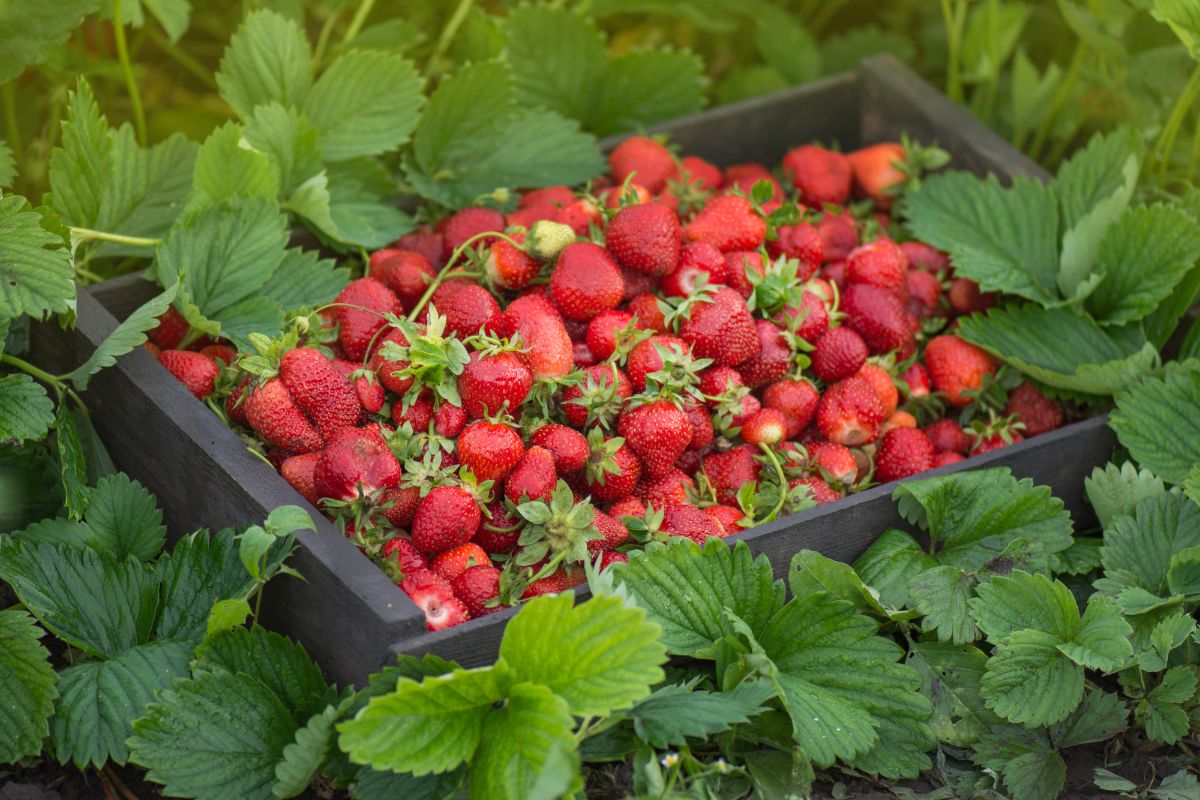
Gardeners love June-bearing strawberries that produce large, juicy fruit in late spring or early summer. Some gardeners even like the fact that June-bearing strawberry plants are highly seasonal, producing just for about three weeks of the year.
Once June-bearing strawberry plants have flowered and fruit, they put all their energy into producing runners to set up the next year’s crop. They will fill up a bed and put down strong root systems that sustain them through cold and drought.
As mentioned earlier, everbearing strawberries aren’t really everbearing. They produce two smaller crops. But they also produce smaller berries than the June-bearing varieties. They don’t produce runners, and they won’t fill up your strawberry bed. But, unlike the June-bearing varieties, they will bear fruit late in the summer of the same year you plant them.
Day-Neutral Strawberries
Day-neutral strawberries don’t care whether the days are getting longer in the spring or getting shorter after the first day of summer. Short days, long days, day-neutral strawberries will bear fruit. Day-neutral strawberries are the real everbearing strawberries, giving you at least a few strawberries every week from the warm days of spring until the fall weather becomes too cold at night (about 35° F or 2° C) for them to keep producing.
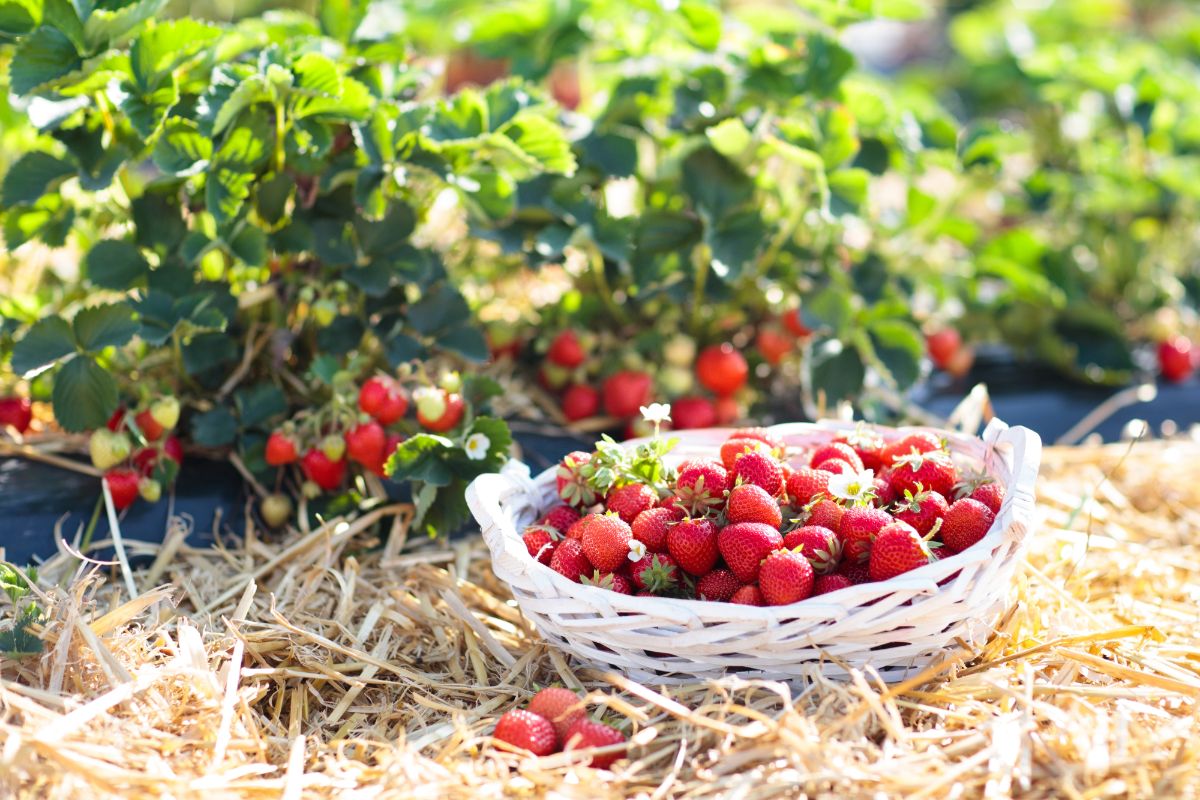
Day-neutral strawberries don’t produce runners, so you won’t have as much to do to maintain your strawberry bed for the next year. They don’t produce berries that are as large as the older June-bearing varieties, but they are more resistant to pests and diseases.
We’ll have more information about specific varieties of all three kinds of strawberry plants in the FAQ section at the end of this article.
There is no rule that says that all of your strawberry plants have to be June-bearing or everbearing or day-neutral. You can keep a few plants of each variety. But there are also ways of raising strawberries that change their growing season.
Raising Strawberries in a Cold Frame
Cold frames extend late-fall production of everbearing and day-neutral strawberry plants. They encourage early spring growth of all three kinds of strawberry plants, giving them an early start to take advantage of longer days while protecting your plants from late freezes.
The secret to success when you are raising strawberry plants in a cold frame is to monitor humidity carefully. Strawberry plants don’t like cold, boggy soil around their roots. It is important not to overwater. Strawberry plants need six hours of sunshine every day. You may need to plant your strawberries in the middle of the cold frame to make sure they get enough sun.
Growing Strawberries in Greenhouses
For commercial growers, the most common reason for growing strawberry plants in greenhouses is to protect everbearing varieties from early frosts and chilly nights of late autumn. These growers don’t make any effort to heat and light their greenhouses through the winter to keep plants in production. They often grow their strawberries in Bato pots (Dutch buckets).
The second most common reason commercial growers put June-bearing strawberries in greenhouses is to protect them from the scorching summer heat. Evaporative coolers and fans protect strawberries from the searing desert heat in late May and June. Shade cloth keeps strawberry plants from getting too much sun. In this situation, growers often use hanging baskets.
There are also situations in which commercial growers cultivate day-neutral strawberries in heated and lighted outdoor greenhouses all winter long. This kind of strawberry growing operation is hard to run at a profit. In these setups, strawberry plants grow in gutters that give them a constant supply of water and nutrients.
But there is another approach to extending the season for homegrown strawberries.
Hydroponic Strawberries at Home
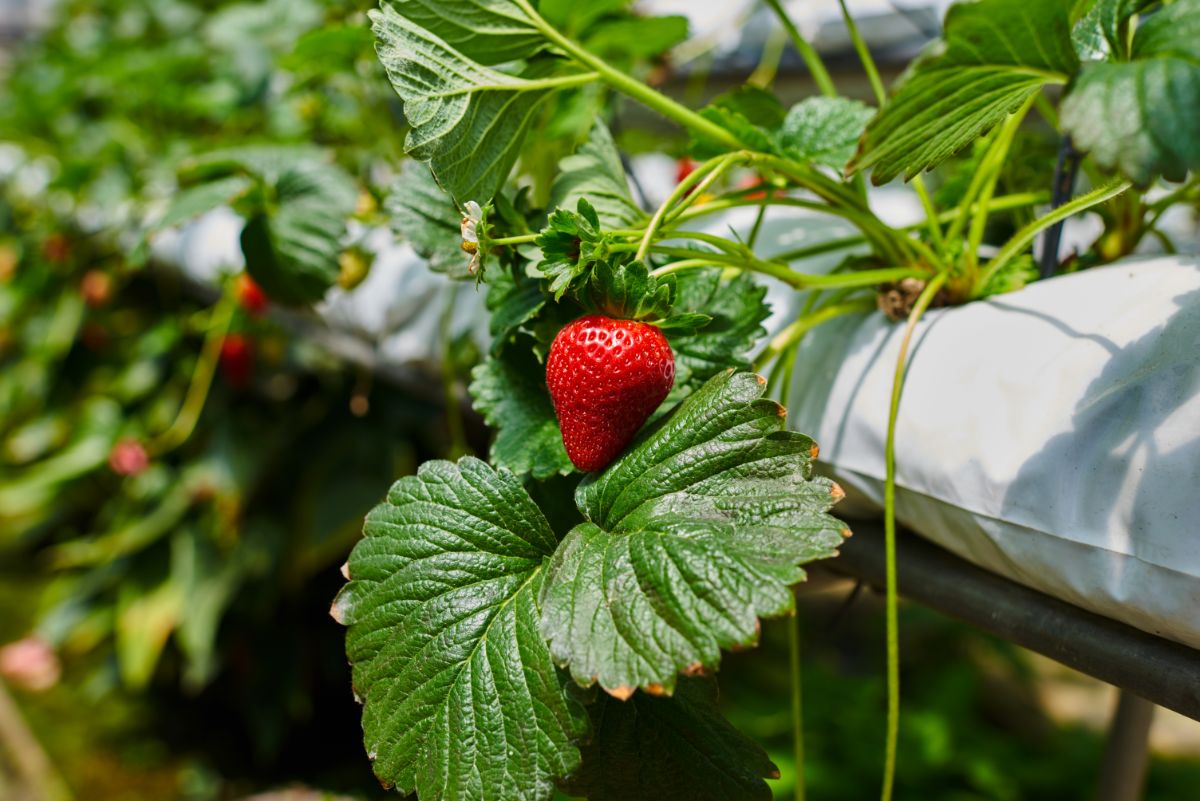
Home strawberry growers can find dozens of hydroponic growing systems that give them the ability to grow strawberries with no soil and minimal cleanup that take just a few minutes a day after the systems are set up. You never have to worry about drought, frosts, windstorms, birds, rodents, or soil-borne diseases (because you grow your strawberry plants without soil).
If you are short on space, your growing units can be stacked vertically. This gives you three to six times more strawberry plants per square foot and makes harvesting easier, too. No soil also means no weeds. Your growing season is any time you want it to be. You just need to be sure to plant everbearing varieties.
It can take a while to learn everything you need to know about hydroponic strawberry plants, and the initial setup is expensive. But once you get your hydroponic strawberry garden started, you have an easy way to extend your strawberry season to 12 months a year.
Frequently Asked Questions
You can’t get strawberries the same month you set them out (unless you buy plants that have already set fruit), but you can get day-neutral plants to bear strawberries the same summer (July until frost in the Northern Hemisphere). You can get same-season production from Tristar and Tribute strawberries.
There is a big difference in moldy fruit problems. It’s a bigger issue with day-neutral and everbearing strawberries, but only because their fruit is more likely to be exposed to rain and dampness This is not a problem when you grow them hydroponically.
“Late-season” strawberries that everlasting and day-neutral strawberry plants put on at the end of the fall tend to be lower in vitamin C, lower in Brix sugar levels, and low in the chemicals that give strawberries flavor. But they still taste good, and they are still nutritious, just not as tasty and nutritious as in high summer.
Wild strawberries are a woodland plant that grows in dappled shade. They put on fruit as early as May and as late as October where the climate is mild enough for them. However, they are finicky about fruiting, and you can’t really count on them for a regular crop. Most of the United States and Canada don’t offer good growing conditions, but if you have the right soil and climate, they will thrive even if you don’t do anything to take care of them.
If your goal is just to have homegrown strawberries all year round, you can always divide a large bed into June-bearing, everbearing, and day-neutral varieties and also use any or all of the methods for protecting your plants outside the usual summer growing season. Just match the type of strawberry to the kind of protection you are giving your plants, and don’t forget that strawberries need long, daily periods of sunlight or artificial light to put on fruit.
Start with your USDA Hardiness Zone and then consider buying eight to 12 plants in each of these three categories, giving each kind of plant its own section in your strawberry bed.
– June-bearing strawberries produce one monster crop per year. In milder climates, this crop will come in June, but in hot-summer climates, it may happen almost anytime after the beginning of spring, when daylight starts lasting longer than 12 hours. There are situations in which “June-bearing” strawberries will put on their fruit explosion for the season in July or August.
– Everbearing strawberries won’t produce one huge crop in late spring or early summer. Instead, they will start putting on strawberries as soon as daylight exceeds 12 hours in the spring and continue moderate production through the summer. With everbearing strawberries, there is less risk that birds, mildew, or weather conditions will ruin your harvest.
– Day-neutral strawberry plants don’t care how long their days and nights are. They start producing in the spring as the plant has had the opportunity to store enough nutrients, and they will continue producing through the summer as long as the daytime temperature is below 85° F (about 30° C) and through the fall until they are set back by frost. However, day-neutral plants tend to set smaller fruit.
Then consider winter hardiness, disease and insect resistance, pH preference, color, size, and flavor. If you are trying to grow strawberries in marginal soil (too alkaline, too much clay, or drought-prone), you might go with a June-bearing berry-like Surecrop, which reliably produces firm fruits in almost any region and soil type and is resistant to leaf scorch, leaf wilt, and Verticillium wilt. Or if your concern is growing strawberries from year to year in a cold-winter climate, you might go with Fort Laramie (everbearing), Hecker (also everbearing), Kent (June-bearing), or Mesabi (June-bearing) strawberries.
Gardeners who like to pop their strawberries directly from hand to mouth in the garden might prefer Earliglow (June-bearing) or Red Chief (also June-bearing). Canners who prefer firmer berries might go with Shuksan (grown in cooler climates, usually harvested in July) or the giant Chilean berries produced by White Chief (day-neutral).
June-bearing strawberry varieties include:
– Earligrow
– Seneca
– Annapolis
– Allstar
– Honeoye
– Delmarvel
– Jewel
– Kent
Popular everbearing varieties include:
– Albion
– Everest
– Quinalt
– Seascape
The most popular day-neutral varieties are still Tribute and Tristar.
Your local agricultural extension agent or any knowledgeable nursery owner can give you more information about the strawberry plants that will produce the best in your area.

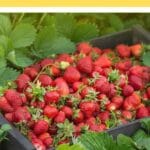

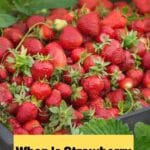






Leave a Reply